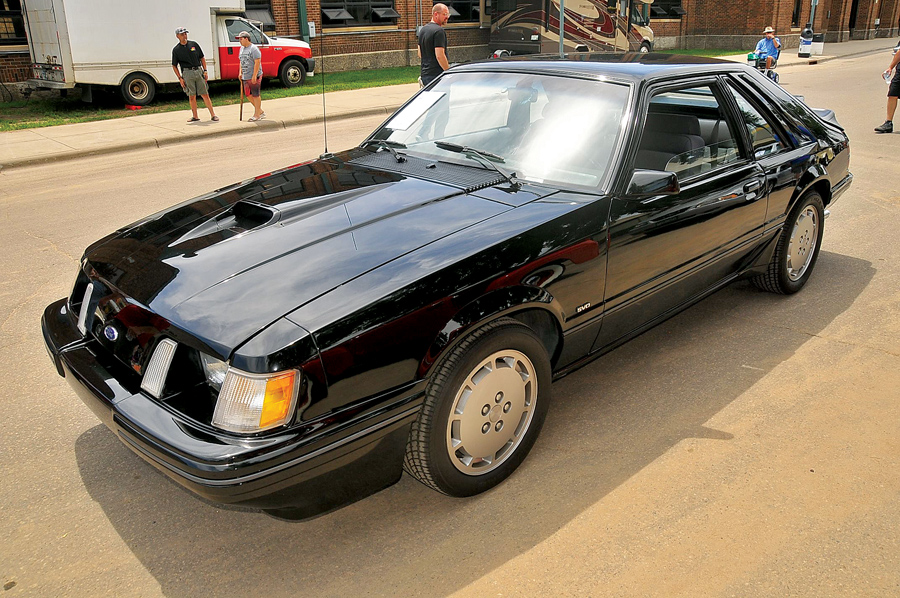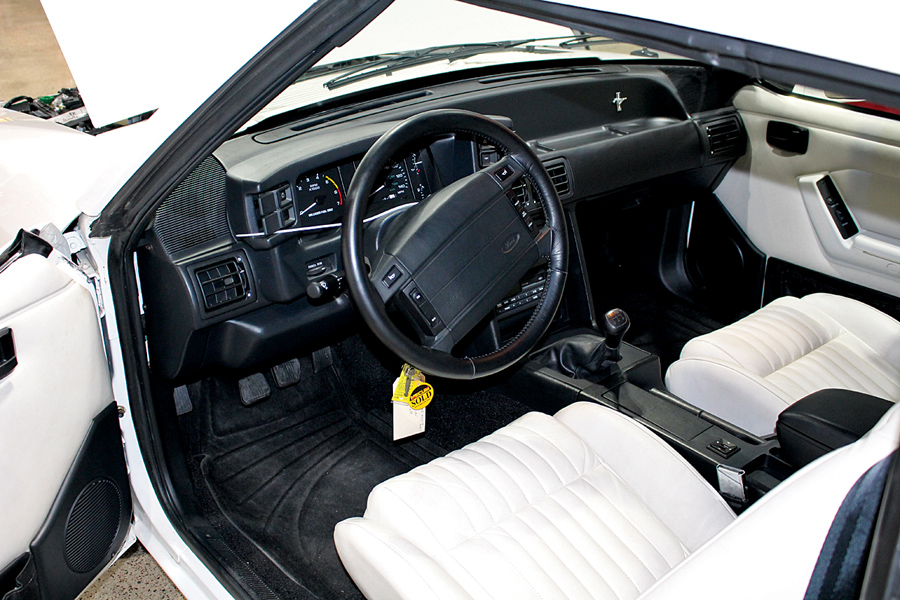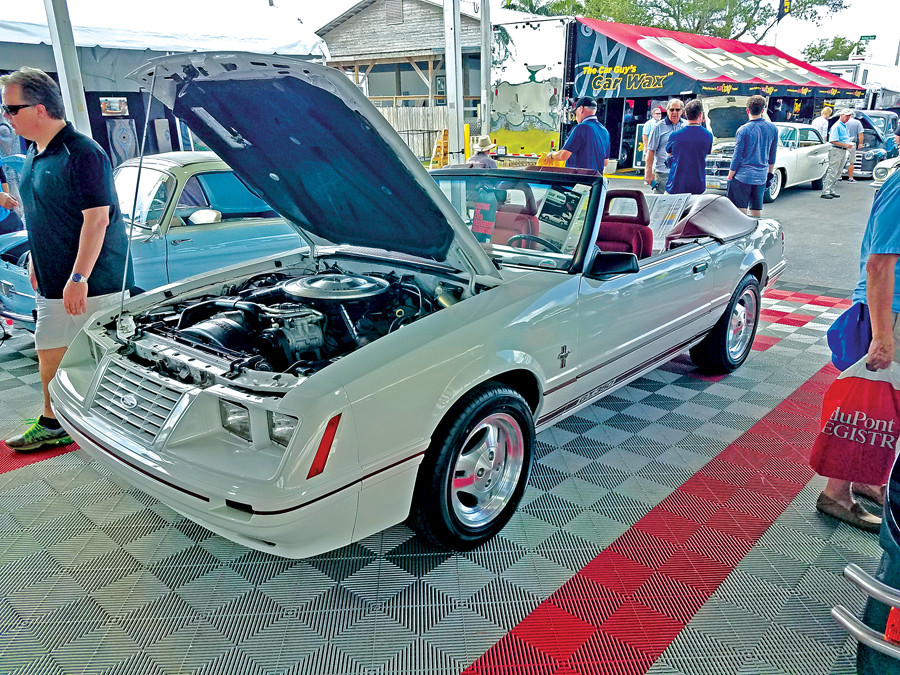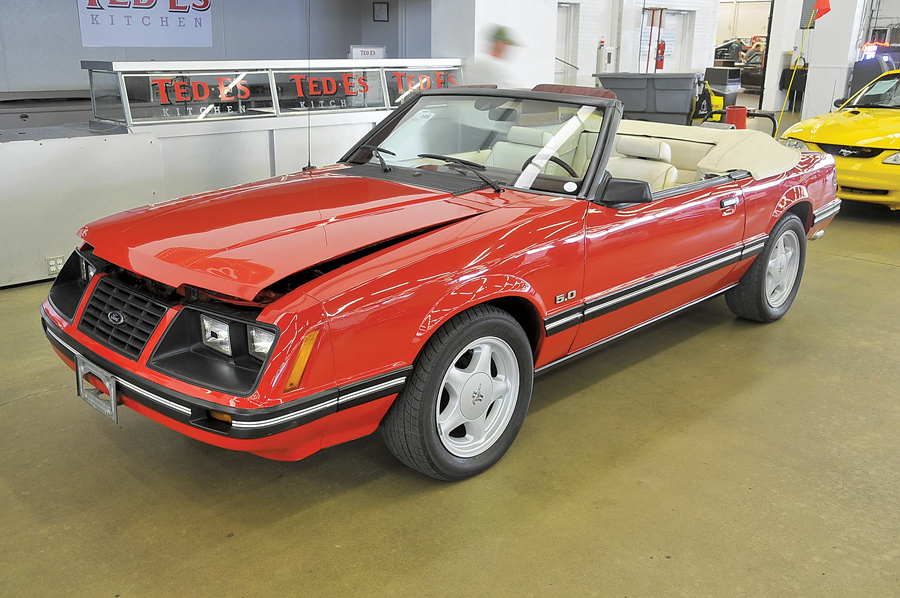
Aman named Rob Van Winkle once sang, “Rollin’ in my five-point-oh, with my ragtop down so my hair can blow.”
Although Vanilla Ice was a self-proclaimed lyrical poet, the pop song “Ice,
Ice Baby” doesn’t quite reach the poetic depths of say, Bob Dylan. The irony is that Ice had so much product in that skunk-striped pompadour that there was no way that hair was blowing.
What the song did do in 1990 was quickly showcase an all-white Mustang GT convertible that was Ice’s personal ride in the video. While the Mustang GT needed no introduction prior to that, it was just another example of a then-current Mustang establishing itself in popular culture and being a legend in its own time.
Fast and cool
The Fox-body Mustang continues to be a legend.
The Fox Mustang was a clean design, with nice lines that never really went out of style. Even the ground effects on the GT are considered subtle by today’s standards. Okay, post-1987 GT cheese-grater taillights were always a little hokey.
Want one? Sure you do.
Low-mileage, well-maintained cars should be the focus of your search. Restoring one of these cars is not cost effective yet, and worn-out unibody cars will always rattle and shake. Good aftermarket sub-frame connectors do a lot to minimize chassis twist, but these cars were flexi-flyers — even with a roof.
A little history
Ford introduced the Fox Mustang in 1979, and that year saw the first 5.0-liter nomenclature on a Mustang, even though it was still the same old 302-ci V8.
During the mid-1980s, Detroit was desperate to inject any level of performance fun into its cars. The marketing efforts of big hood stickers and snazzy body stripes trying to make boring cars look cool were becoming passé.
Automakers were realizing that technology needed to catch up with emissions regulations, and fuel injection was the answer that Ford needed to take the cars into the 21st century.
The Fox-body Mustang was named for the internal designation of the Fox unibody platform that was already in production by the mid 1970s as the Ford Fairmont. From 1979 through 1993, these cars shook Detroit out of the dreary, bland cars of the Malaise Era.
They’re still fun to drive, and good deals are out there. But you’ve got to know your dos and don’ts.
What to do — and NOT do
Here is a quick DO and DON’T list along the evolutionary timeline of the Fox Mustang.
DO look at minty-fresh 1979 Pace cars. They came in both 5.0 and turbo 4-cylinder variants, and, on paper, made about the same power. DON’T fall for that. In reality, the 4-cylinder popped head gaskets even though the iron Pinto motor was tried and true.
DO look to 1982 for the intro of the GT again in 5.0 HO (High Output) trim. DON’T look to the 255-ci V8 in 1980 and 1981. It was a de-bored 302, and as a CAFE compromise, only lasted two years, for good reason.
DO look for the 1983 5.0 GT convertible. There were only a few of them made, as this was the first year the convertible came back into play. A one-year-only hood bulge identifies them. This was also the first year for the return of the 4-barrel carb. DON’T try to pretend any other motor, especially 6-cylinder Mustangs of this era, is worth having.
DO look for the GT350 trim package in 1984. It didn’t do anything for performance and Shelby had nothing to do with it, but they bring more money for the novelty factor alone. DON’T get the 4- cylinder turbo. If you want the Turbo, get the SVO.
DO pick up the 1986 SVO if you like turbos. It was a cool car and was trying to rival the Porsche 944 with a slight Euro flavor. Even though the SVO was available in 1984 and 1985, the 1986 flush headlights make the look complete and the model had a slightly higher horsepower rating, which enhances desirability. DON’T buy a Porsche 944 if you like Mustangs — and don’t buy a sketchy SVO. SVO-specific parts are tough to find.
DO buy a fully loaded 1985 GT in a great color. This was the only year for roller-tappet lifters in the 5.0 and the 4-barrel factory Holley carburetor. Even though it was the last year for the carb, the end of an era is prominently displayed, and old-school carb guys love this 1985 car. DON’T look to the 1985 models using Central Fuel Injection. It was available only with the automatic transmission. It should be avoided. The carb is cooler.
DO look for post-1987 cars for the facelift factor alone. DON’T buy the 1986 5.0. With the redesign happening in 1987, it makes no sense. Plus, the 1986 heads were more restrictive and dropped horsepower numbers versus the 1987-and-newer cars.
DO look to special editions like the 1993 Cobra or any year Saleen. Surprisingly enough, the 1993 Cobra is the only Ford production Mustang ever to be built with parts from the Motorsport catalog to increase horsepower. There were a bunch of these cars made, and finding nice ones is not that hard. They do fetch a premium, and they will front-run appreciation. DON’T buy fake Saleens. They are worth less than a nice stock non-Saleen example with low miles. All Saleens are documented, so fake ones are easy to spot with a little homework
DO look to post-1987 notchback (trunk, not hatchback) cars as well. These also bring a premium in factory 5.0 trim. DON’T buy a notchback GT. All notchback cars were LX trim from the factory. I have seen homemade conversions, and they look cool, but none had GT ground effects originally.
DO an inspection of the chassis, and if there was ever any repair to the torque boxes where the rear-end lower control arm attaches, run from it. DON’T buy drag-raced cars. Racing will eventually rip the spot welds out of the torque boxes, and good cars are still out there.
Fun to drive — and cheap parts!
Even with the antique design of the Fox unibody, these cars are still tremendous fun and are usable anywhere. Parts are cheap and restoration bits flooded the market years ago, but buy the best car you can afford.
Despite Vanilla Ice’s lyrical promises, bad cars are a problem even Vanilla Ice can’t solve. ♦


